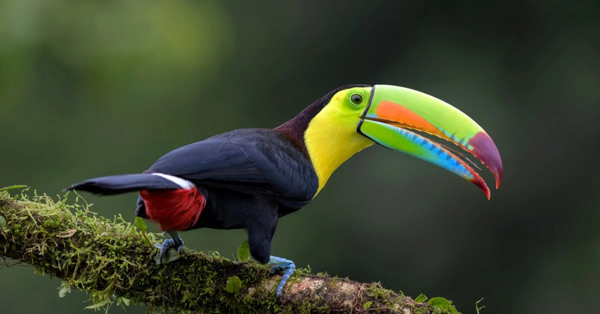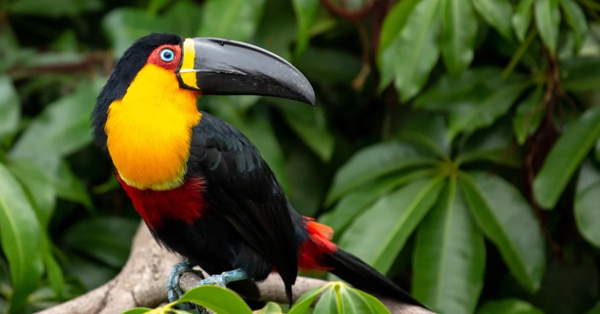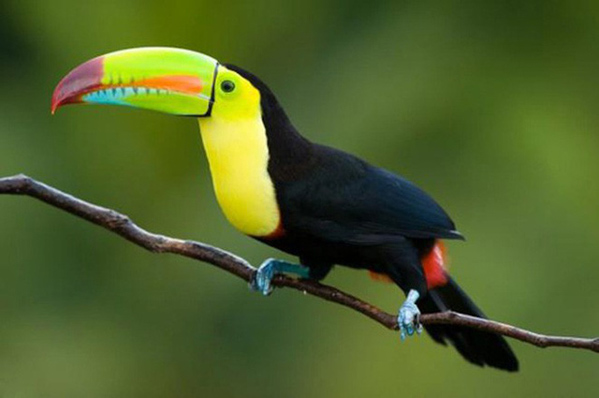Toucan bird – A bird with a colorful bill almost as long as its body
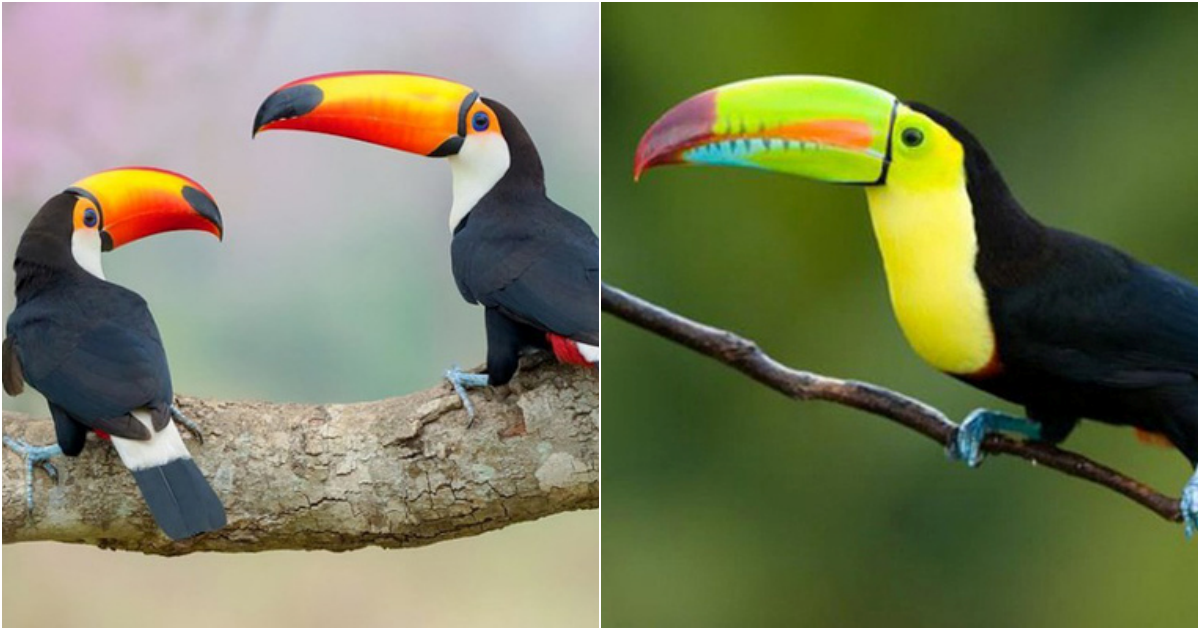
4 amazing facts about Toucan!
- The Toucan is an incompetent bird.
- Their beak looks heavy but is actually very light.
- Their tongue is similar to a feather that helps push food down the throat quickly.
- They usually gather in herds of 5-6 together.
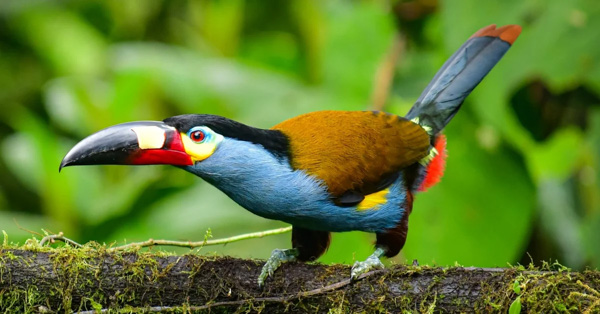
Where to find Toucan birds?
Toucan birds are found in the tropical forests of South America and Central America. Specifically, they live in Bolivia, Brazil, Argentina, French Guiana, Peru, Paraguay, Uruguay, Guyana and Suriname.
These birds live in warm climates with heavy rainfall. Usually, they perch in the highest parts of the tree to hunt.
Costa Rica is a popular place for bird lovers to observe these birds. The boat-billed Toucan, Ramphastos sulfuratus can be seen in the Cartago, Turrialba and Monteverde mountain ranges. They are usually found at elevations between 1600 and 5000 feet.
Carrara National Park, Cano Negro Wildlife Sanctuary and Tortuguero National Park are other places where you can see these exceptional birds any time of year.
Toucan Bird’s Nest
Toucan birds nest in small holes in hollow trees overhead. Sometimes they lay a thin layer of grass as a lining for the nest. Toucans do not make holes in trees by themselves. Instead, they nest in holes made by woodpeckers or other animals.
Scientific name of bird Toucan
The common name for this bird is toco touchan. Their scientific name is Ramphastos toco In Greek, “Ramphos” means stronghold and “Astos” means citizen.
Toucan birds belong to the family Ramphastidae and class Aves. There are 35 varieties of Touban worldwide, the most prominent of which are: Yellow-throated Toucan, Channel-billed Toucan, Chestnut mandibled Toucan and Keel-billed toucan.
Appearance and personality characteristics of Toucan birds
The most notable feature of this bird is its beak. When looking at this bird, you will see a hollow beak with thin bones supporting it. Moreover, it has sharp edges like a serrated kitchen knife. This allows them to bite into hard fruit and other foods.
In terms of colour, the beak of this bird can be a mix of yellow, orange, green, blue, red and black depending on their species. A smaller predator that sees this bird’s large and colorful beak may not want to go near it.
The body feathers of this bird are mostly black with patches of blue, yellow and red in different areas. Plus, their paws are blue! Note, the bird has two forward-facing toes and two backward-facing toes. This feature allows them to hang on a tree branch. In addition, their unique legs allow them to easily jump from branch to branch.
These birds can grow up to 25 inches long with beaks that can be as long as 7.5 inches. Studies of the Touban bird’s skeleton show that its beak is about one-third the size of its body. Their wingspan is 43 to 60 inches long.
Reproduction and lifespan of Touban birds
These birds are not migratory. They will live in a fixed area for the rest of their lives.
The breeding season of these birds takes place in the spring. One of the most interesting facts about this bird is how it mates. At this time, the male and female birds will throw a piece of fruit to each other.
Birds lay 2 to 4 eggs per year. The mother bird and the father bird take turns incubating the eggs in the nest. The incubation period of the eggs is from 15 to 18 days. The chicks are born without feathers. Their eyes open at about 3 weeks old. The chicks stay with their parents for 6 to 8 weeks.
These birds are sexually mature at 3 to 4 years of age and can live up to 20 years.
|
What do Toucan birds eat?
Along with fruit, this bird also eats insects, amphibians and small reptiles. In addition, they also eat eggs and chicks stolen from the nests of other birds.
Due to their fruity diet, these birds play an important role in the ecosystem. After eating the fruit, they leave seeds in their waste which causes more plants to grow.
Number of Toucan birds in the world
Currently, it is not possible to determine the number of Toucan birds worldwide. However, according to the IUCN Red List of Endangered Species, this Toucan is described as ‘fairly common’ in its environment.
The conservation status of this bird is of least concern, although the population is decreasing.
Above is all information about the Toucan bird that the article wants to send to you. Hopefully, through the above sharing, you have learned more new and interesting things about this special bird.
